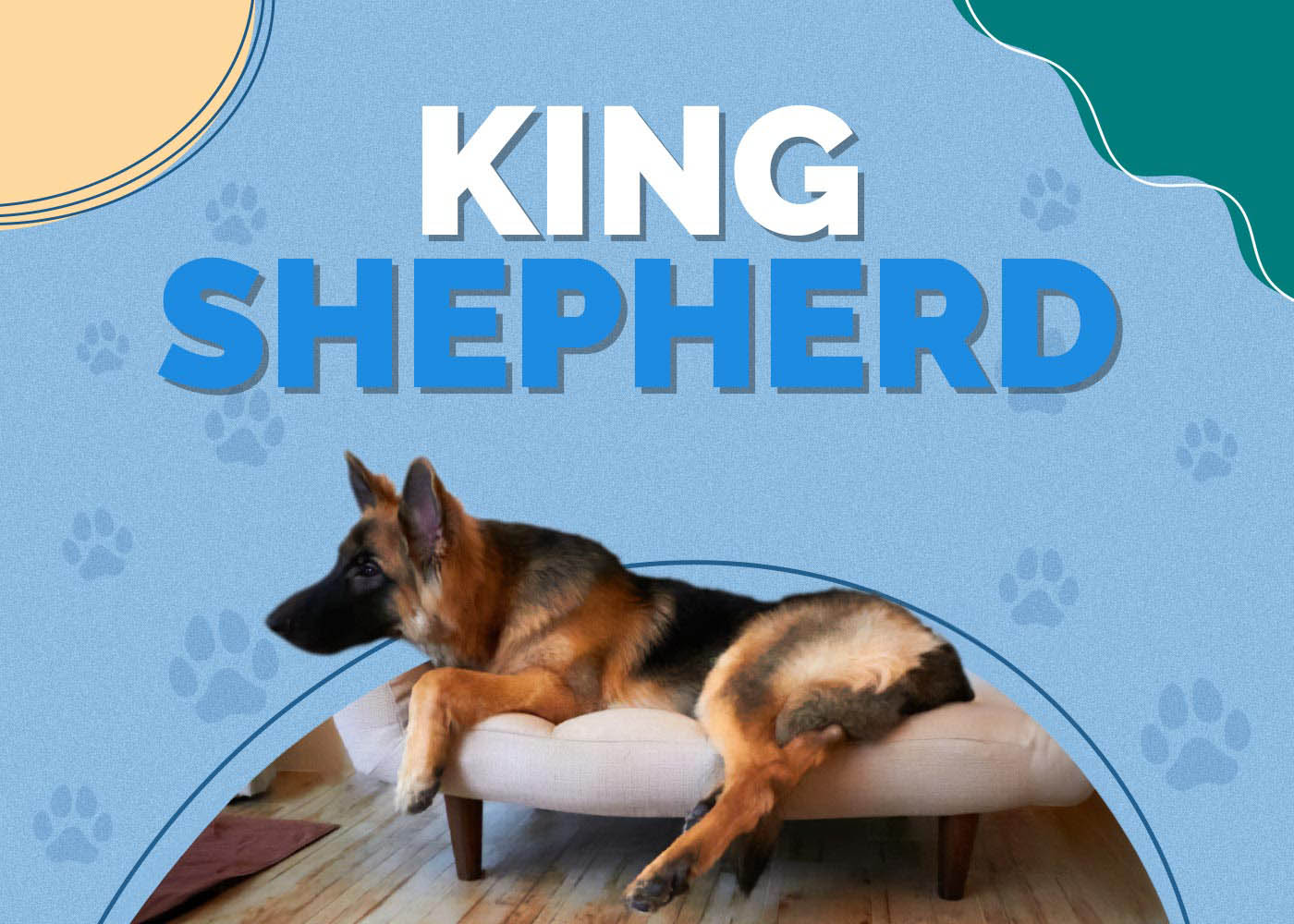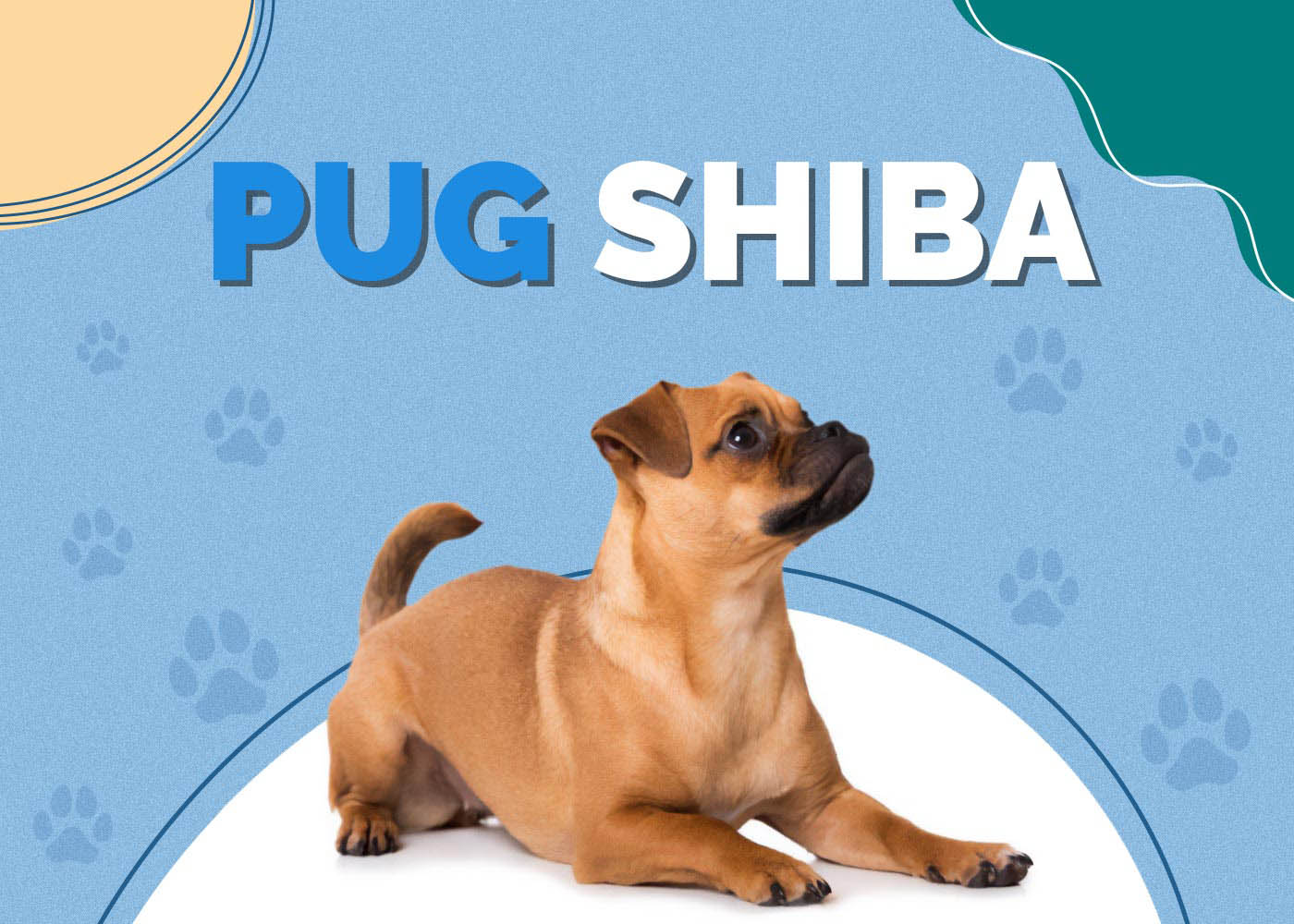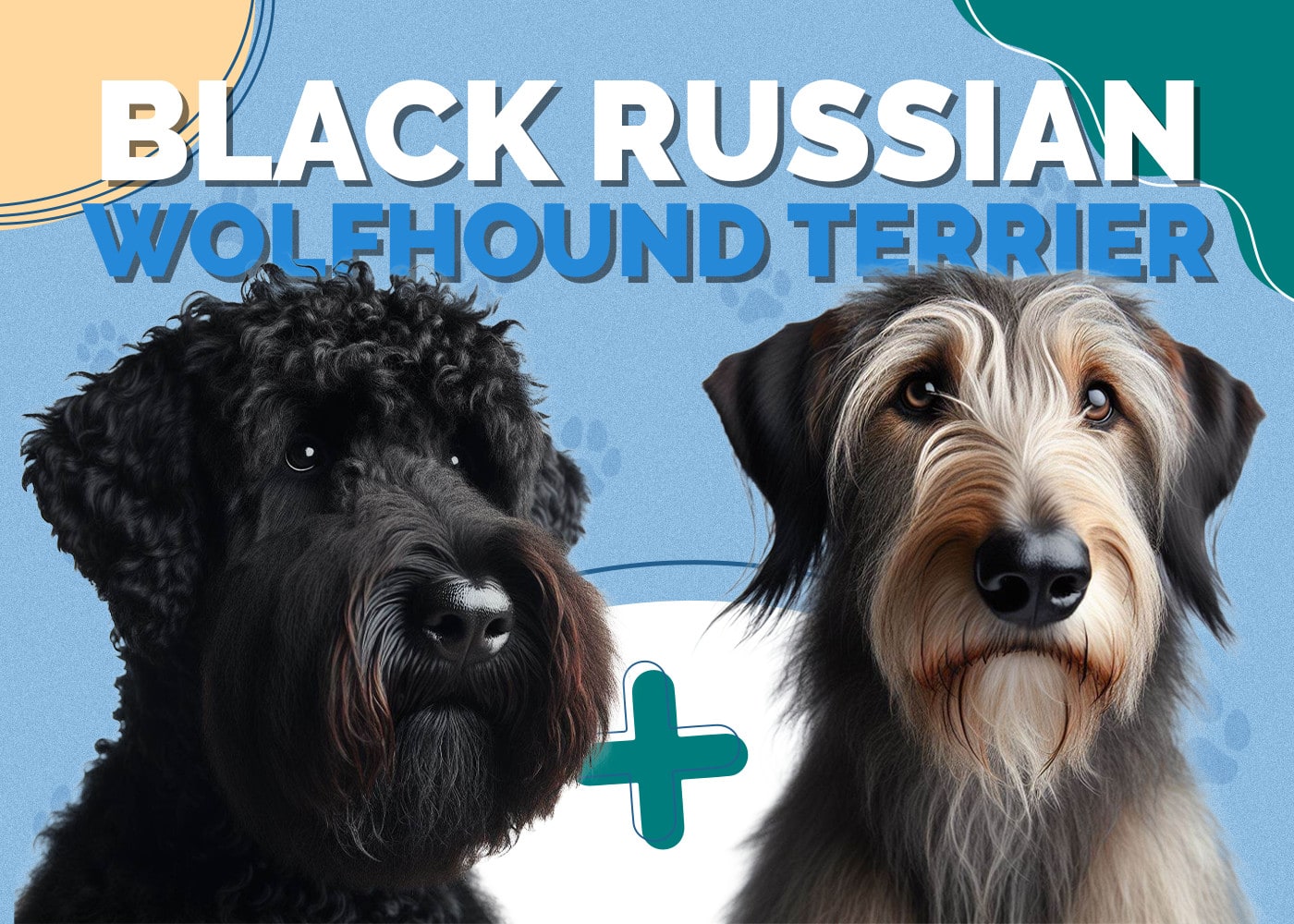Native American Shepherd: Info, Pictures, Characteristics & Facts

Updated on
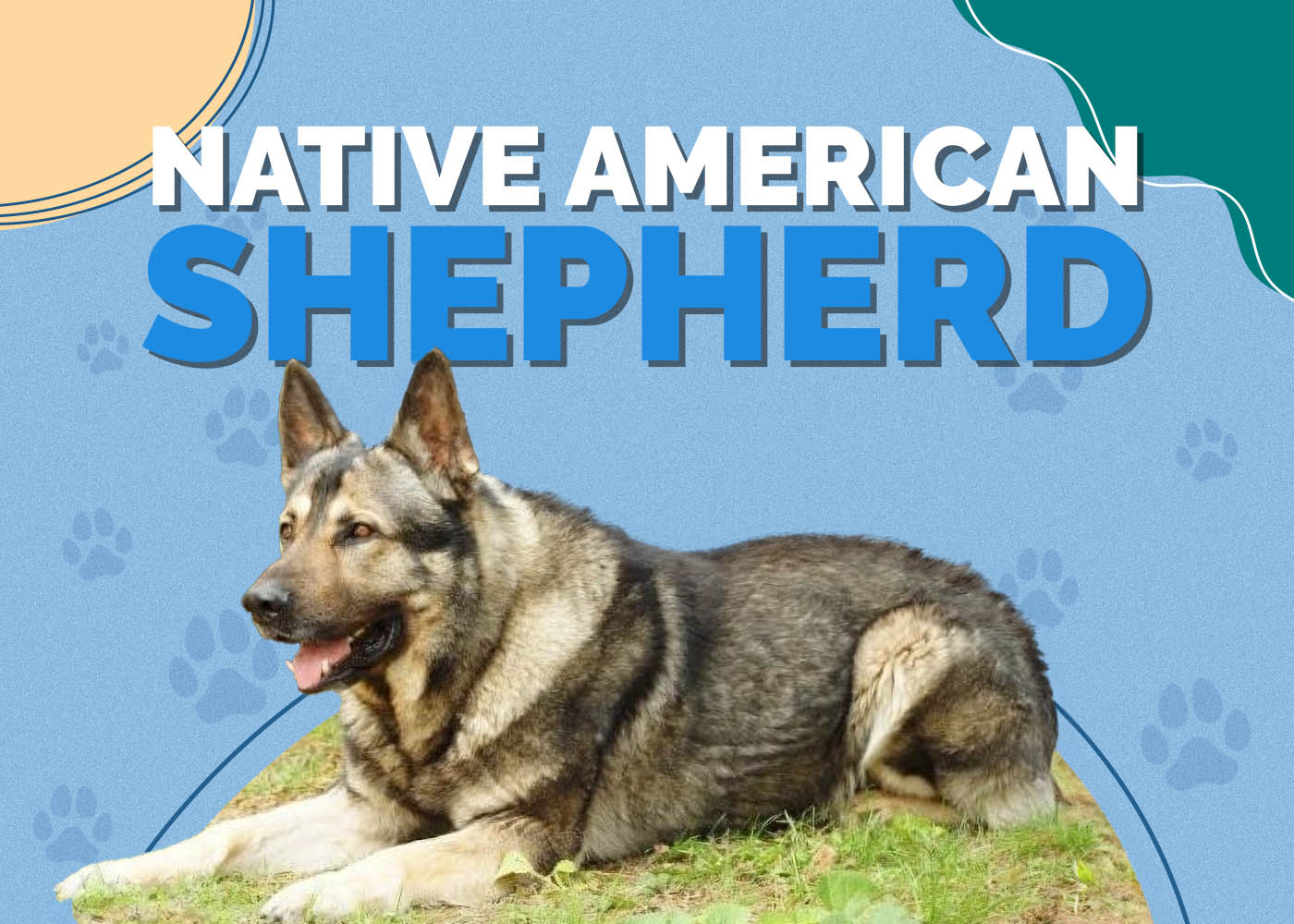
| Height: | 18 – 32 inches |
| Weight: | 45 – 85 pounds |
| Lifespan: | 14 – 19 years |
| Colors: | Black, brown, brindle, grey, cream, pied |
| Suitable for: | Attentive owners, experienced dog owners, families of any size, homeowners with large yards, active owners |
| Temperament: | Loyal, stubborn, intelligent, playful, friendly |
The Native American Shepherd is a mix between a Native American Indian Dog and a Belgian Shepherd. It’s a fairly uncommon breed, but if you see one, you likely won’t forget it! These dogs have a stunningly beautiful long coat with coloration that often resembles that of a wolf.
These dogs are extremely loyal, friendly, loving, and playful, so they often make wonderful family pets. They also have a natural urge to protect, so they will make excellent guard dogs for you, your family, and your home.
The Native American Shepherd is an even-tempered companion dog that will stand by your side through just about anything. We’ll go over everything you need to know about this beautiful breed so you can decide if this is the right dog to bring into your home.
Native American Shepherd Puppies
The first thing you need to be aware of with this breed is their emotional neediness. You may look at their steely eyes and confident stance and think they’re independent dogs, but Native American Shepherds thrive on human interaction. You’ll want to make sure you can give this dog the attention it needs, or you may find that they exhibit some destructive and unwelcome behavior.
Next, you should be certain that you can handle the energy and activity requirements of this breed before committing. These pups need about an hour of exercise every single day, and they can and will exercise for much longer if they’re given the opportunity. They have incredible endurance, so you’ll need to dedicate ample time to exercising them if you want to deplete some of their abundant energy.
Lastly, you should be prepared for the training that you’ll need to implement with this breed. The Native American Shepherd is highly intelligent, but with that intelligence comes some willfulness and stubbornness. Both of these traits can make training a bit difficult, so it’s best to get this breed accustomed to a consistent training schedule beginning early on in puppyhood. The earlier you begin training, the better chance you’ll have of the training sticking with your pooch.
3 Little-Known Facts About the Native American Shepherd
1. They Have a Bit of a Sixth Sense
Many owners and breeders have mentioned the Native American Shepherd’s “sixth sense,” which is to say that they can detect diseases and health issues in humans. Others even say that they can sense when their owners are about to slip or fall and will jump in to intervene and prevent injury.
2. They Are Considered Hypoallergenic
Yes, you read that correctly! You may take one look at this dog and assume they’re heavy shedders and therefore terrible for owners with allergies, but the Native American Shepherd is considered allergy friendly! It’s important to note that these dogs do shed year-round, but the volume of shedding is low enough that they’re considered a good fit for allergy sufferers. They’ll shed more heavily in the spring when they blow their winter coats, but aside from this, shedding will be surprisingly low for such a long-haired dog.
3. They Have a Very Extensive History
The Native American Shepherd is a “designer breed” that was likely popularized in the late 1900s, but their parent breeds have been around for thousands of years. The Native American Indian Dog is believed to have originated in the Americas around 10,000 years ago! Although Belgian Shepherds were officially classified as a standalone breed in the late 1800s, their ancestors prior to the designation can be traced back for many hundreds of years as well.
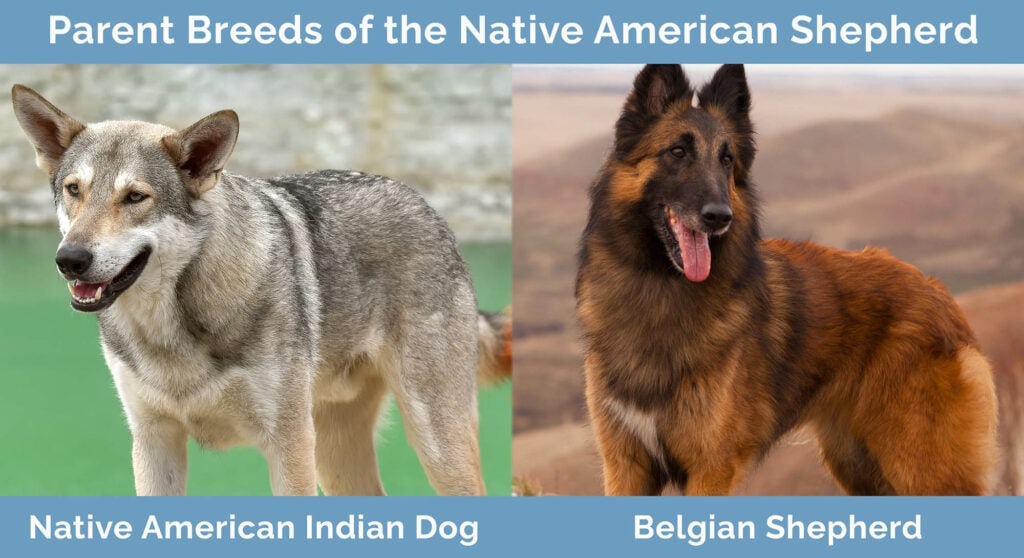
Temperament & Intelligence of the Native American Shepherd 🧠
Native American Shepherds are very even-tempered, friendly dogs that have a lot of love and loyalty toward their owners. They will happily stand between you and any perceived danger, and they are very alert. These traits make them excellent watchdogs.
These dogs are extremely intelligent, so much so that they need human interaction on a very regular basis to stay occupied and focused. They will quickly become bored and can resort to destructive behavior, so interaction and toys that require logic and thinking are requirements for these dogs.
Native American Shepherds may look intimidating, but they’re rather playful and will fit in and interact with all familiar people happily.
Are These Dogs Good for Families? 🏡
Native American Shepherds can make excellent family pets. They are loyal companions who will always show love and even some affection to their family members. They will protect you, your family, and your home willingly.
Because these dogs thrive on human interaction, they do best in homes where there are multiple people who can give them attention. They can become bored easily, so if you have several family members living in your home, there is a better chance that these pups will get the attention and stimulation they need.
Some people worry about how wolf-like dog breeds will be with children, but you will never have a need for concern with this breed when it comes to interacting with your kids. They are excellent with family members of all ages, and that includes young children. They have patience, and they seem to be so intelligent that they know small children require a little extra.
Does This Breed Get Along With Other Pets? 🐶 😽
Native American Indian Dogs usually get along with other dogs without any issues. They very rarely show aggression, and they will likely welcome the company of other dogs, especially if they are introduced to them early on. This includes dogs they live with as well as other dogs they meet on walks or at dog parks.
While they may welcome the company of other canines, your Native American Shepherd inherits a rather high prey drive, which means they may have a strong urge to chase and pin down any cats or smaller animals in your home. As such, these dogs are recommended for homes without cats, rabbits, or rodents.
This prey drive also applies to animals your dog sees outside, like wild rabbits or squirrels. During walks, hikes, or other outdoor exercise, it’s very important to keep your Native American Shepherd on a leash and a strong harness, as they may lunge at or chase down any small animal they see.
Things to Know When Owning a Native American Shepherd:
Food & Diet Requirements 🦴
This is a medium- to large-sized dog breed with a fairly high energy level, so you should expect to feed your pup about 3 cups of dry dog food a day. They don’t often experience issues with obesity or weight gain, but note that they will often eat more than 3 cups a day if you let them!
Being an energetic dog, the Native American Shepherd requires a diet that is high in protein and doesn’t contain a lot of filler foods like corn and wheat. A commercial dog food with high protein content from different sources will be perfect for providing the energy and nutrients your dog needs.
Exercise 🐕
Native American Shepherds come from a long line of dogs that have a high energy level and are capable of running long distances as sled dogs. As such, your pup will need about an hour of exercise a day in the form of walking or running.
Your Native American Shepherd will have a playful spirit and will seemingly expend quite a bit of energy during playtime, but it’s important to note that these dogs have very high endurance, so playtime should not replace dedicated exercise.
Lastly, the Native American Shepherd has a long, dense coat that protects it from cold weather, so they are most comfortable in moderate or colder climates. If you live in a warmer climate, be very careful not to let your pooch get overheated during exercise. Frequent breaks and plenty of water are best on particularly hot days.
Training 🦮
Native American Shepherds are extremely intelligent dogs, which means they will pick up on new commands and rules with ease. They will likely understand what you want them to do with just some basic repetition.
With their intelligence, however, comes some willfulness and stubbornness. They will likely understand what you’re saying, but they may choose not to listen. For this reason, owners with experience in dog training and obedience will have the best chance of training these dogs, and the breed is not particularly recommended for new dog owners.
It’s also important to note that these are naturally pack dogs, so they desire a leader to guide them at all times. You’ll want to establish authority for yourself beginning at a young age, and you’ll have to work to maintain that leadership and authority through adulthood. Your pooch will happily disobey you if they don’t view you as the pack leader, so you need to put in the time and effort to reinforce and maintain that position.
Lastly, these dogs love human interaction and can be rather sensitive, so it’s important to maintain positivity throughout their training. Focus on rewarding good behavior rather than punishing bad behavior and you’ll be more likely to get through to your dog.
Grooming ✂️
Surprisingly, a long, dense coat, in this case, doesn’t equate to a large amount of maintenance for these dogs. You’ll need to brush your pooch about once a week with a pin brush to cut down on shedding and to help distribute your pup’s natural skin oils for a healthy coat. During spring and fall months your Native American Shepherd will shed its winter and summer coats, so daily brushing will be required until these seasonal coats are fully shed.
Bathing a dog with long hair can be a nightmare, but you don’t have to worry much about that with these dogs! Their coats naturally stay clean, so you can plan to do regular bathing about once every 2 months or even less frequently if your pooch doesn’t need it.
Aside from proper coat maintenance, you’ll want to keep your dog’s nails trimmed to prevent cracking and injury, and you should plan to brush your dog’s teeth about two times a week to maintain good dental hygiene, as plaque buildup is common in this breed.
Lastly, wiping your dog’s inner ears clean about once a week will remove debris and wax buildup that can lead to infection.
Health Conditions ❤️
Despite their lengthy lifespans, Native American Shepherds are, unfortunately, prone to some medical issues. Most aren’t life-threatening, but you’ll want to keep a close eye out for the below problems just to be safe. Additionally, some people believe the above-average lifespan of these dogs means they are generally hearty and healthy. While this may be true, you’ll still want to schedule regular vet checkups to keep your pooch in the best shape possible.
- Epilepsy
- Hip dysplasia
- Progressive retinal atrophy
- Hypothyroidism
- Several forms of cancer
Male vs. Female
For the most part, your Native American Shepherd’s temperament and behavior won’t depend much on their sex. Males tend to be a bit more distrustful of strangers and can be more energetic and protective, but most are even-tempered enough that you won’t notice much of a difference. Males and females also tend to be around the same average size, but height and weight can vary based on which parent breed your dog resembles more.
Final Thoughts
The Native American Shepherd is a gorgeous dog breed that is highly intelligent, loyal, and generally friendly. They make excellent family pets for families that have lots of attention to give, as these dogs thrive on human interaction and can become bored easily.
They are very energetic as well and tend to be rather playful, so they fit in with active lifestyles, as well as with families with young children. They have patience for kids and an uncanny understanding that they need to be played with more delicately.
They can be a handful when it comes to training, as they can be stubborn and resist commands. They desire a leader who can establish authority on an ongoing basis, but if you and your family have ample time and energy to dedicate to training this dog, you’d have difficulty finding a more loyal and loving companion for your family.
See also:
- Siberian Indian Dog (Siberian Husky & Native American Indian Dog): Info & Pictures
- Native American Indian Dog: Breed Info, Pictures, Traits, & Facts
Featured Image: CC0 Public Domain, pxhere





